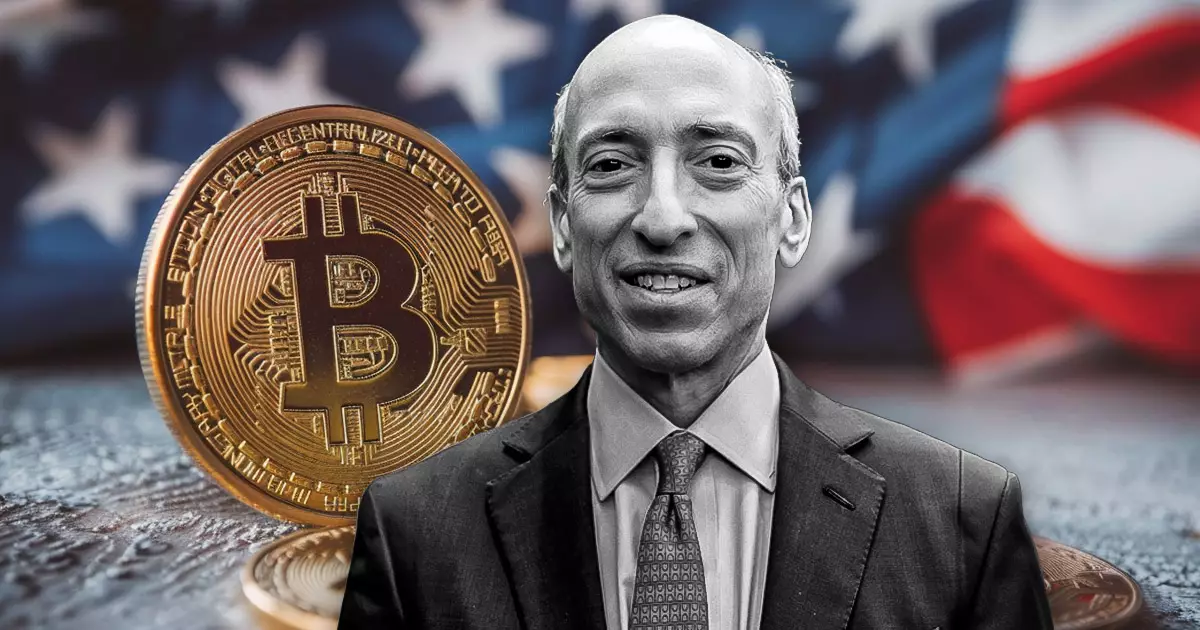As the chair of the U.S. Securities and Exchange Commission (SEC), Gary Gensler has had an intricate role in shaping the regulatory landscape for the burgeoning cryptocurrency market. On November 14, during his address at the PLI Annual Institute on Securities Regulation, Gensler’s comments provided a stark glimpse into the SEC’s current stance on digital currencies. His speech not only reaffirmed the distinction between Bitcoin and thousands of altcoins but also hinted at the political ebb and flow that may soon alter his leadership position.
At the forefront of Gensler’s discourse was the delineation of Bitcoin as a non-security asset, a classification previously upheld by former SEC Chair Jay Clayton. This assertion positions Bitcoin uniquely within the cryptocurrency landscape, exempting it from many of the more stringent regulatory requirements that apply to other digital assets. Gensler stated, “Not every asset is a security,” reflecting a clear intent to separate Bitcoin from the over 10,000 other cryptocurrencies he characterized as potentially securities under the law.
This perspective is critical for investors and market participants, as it implies a significant differential treatment of Bitcoin when compared to its altcoin counterparts. Despite Bitcoin’s categorization, the regulatory body has lavished attention on other digital assets, focusing 5% to 7% of their regulatory actions on them since 2018. This regulatory approach underscores the SEC’s conviction that compliance with established securities laws is vital for ensuring market integrity and investor protection, as Gensler noted, “History has shown for 90 years that robust securities regulation creates trust in markets and fosters innovation.”
Throughout his address, Gensler emphasized the SEC’s ongoing efforts to safeguard investors against the backdrop of rampant speculation and illicit activities that have permeated many areas of the crypto market. His assertion that many altcoins lack viable use cases and instead facilitate speculative ventures illustrates the agency’s cautious outlook on this rapidly evolving sector. For regulators, these concerns are paramount as they seek to provide a framework that encourages legitimate innovation while culling potentially harmful activities.
The chair’s comments also revealed a notable approval of exchange-traded products (ETPs) related to Bitcoin and Ethereum. By championing the approval of spot Bitcoin and Ethereum ETFs, Gensler signaled a departure from previous SEC policies that stifled access to physically backed crypto investments. This regulatory shift could invite broader participation in the crypto markets, opening doors for further investment while simultaneously ensuring that market participants benefit from the advantages of disclosure, lower fees, and enhanced competition.
Intriguingly, the backdrop against which Gensler delivered his remarks included the potentially seismic shift in U.S. leadership following Donald Trump’s election. Trump’s articulated intention to replace Gensler creates a palpable tension regarding the chair’s ongoing role. As Gensler reflected on his tenure, stating that it had been “a great honor to serve,” his tone hinted at a farewell, which raises questions about the impending changes that could reshape the regulatory framework for cryptocurrencies.
The immediate reaction of Bitcoin’s price—soaring over 30% post-election—bears testimony to the market’s sensitivity to regulatory developments and political winds. Many analysts are drawing connections between Bitcoin’s bullish momentum and expectations of a deregulatory environment under a Trump administration. Given the current regulatory landscape, coupled with the political climate, stakeholders in the crypto realm are understandably on edge, as the outcomes have the potential to dramatically alter their operational environment.
Understanding the Broader Crypto Ecosystem
Gensler’s comments also illuminated the composition of the cryptocurrency market at large, highlighting that apart from Bitcoin, Ethereum, and stablecoins, a substantial portion of the remaining crypto market—valued at approximately $600 billion—lies in a nebulous area riddled with compliance challenges. This fraction constitutes less than 20% of total crypto capitalization and presents considerable obstacles for regulators aiming to streamline and fortify the market against speculative volatility.
As Gensler concluded his speech, he painted securities regulations as the “rules of the road” for financial markets—a metaphor that underlines the critical need for clear guidelines to navigate an often tumultuous landscape. Whether Gensler’s tenure will continue into a new administration remains a point of speculation, yet his rhetoric portrays a steadfast commitment to a regulatory approach that champions Bitcoin, Ethereum, and stablecoins while scrutinizing lesser-known digital assets.
In this intricate maze of regulation, compliance, and speculation, Gensler’s address underscores the growing importance of a balanced approach. While he presents an argument in favor of certain cryptocurrencies, industry players like Coinbase, Kraken, and others may still harbor skepticism about whether the SEC’s actions truly serve their interests or the overarching goal of investor safety. The path forward in cryptocurrency regulation is fraught with complexity, and the nuances of Gensler’s perspective will undoubtedly reverberate throughout the sector for years to come.

